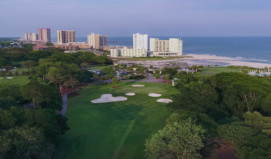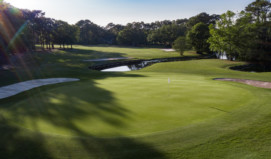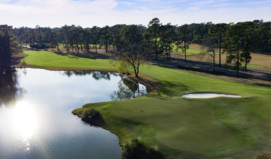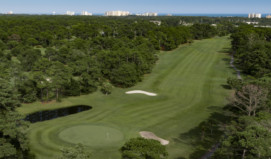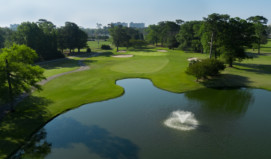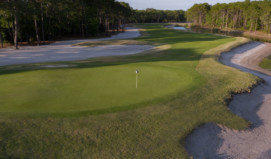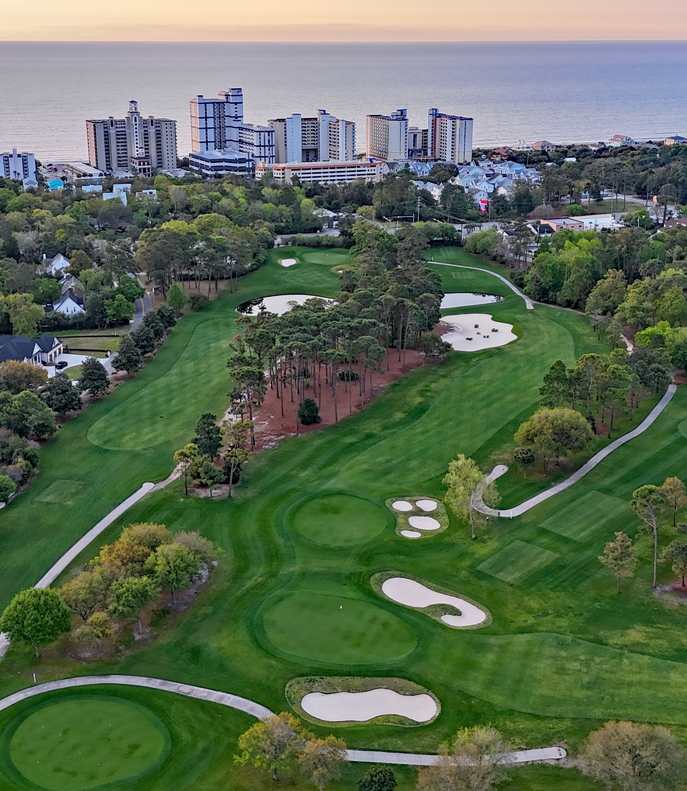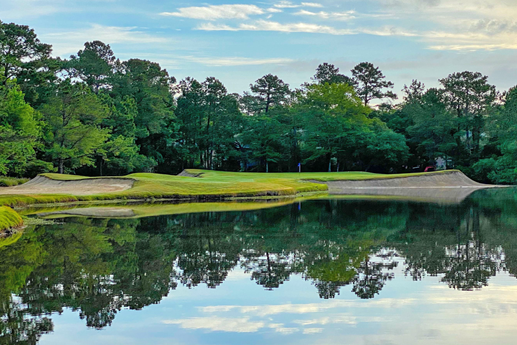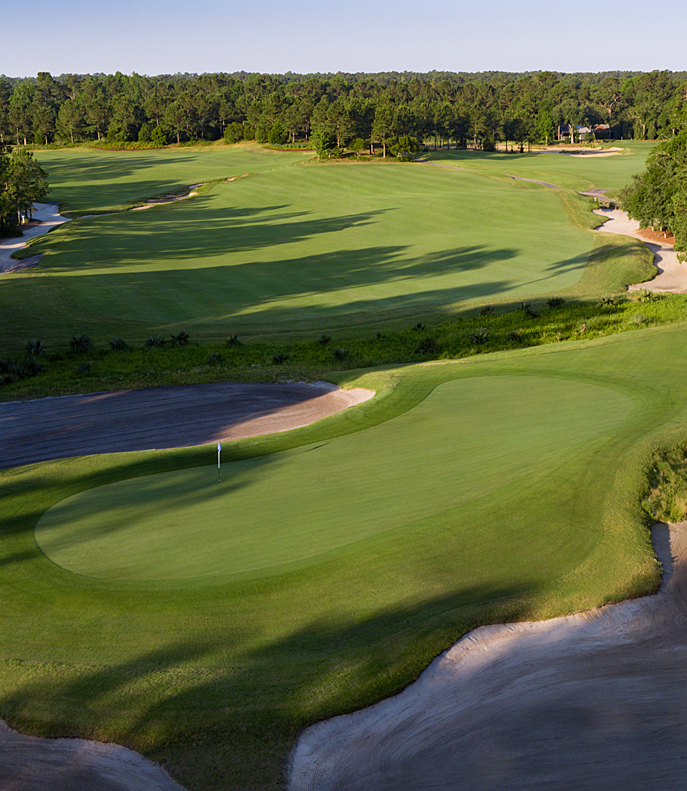
Story by Chris King
The 1960s were a turbulent time in America. The assassination of President John F. Kennedy, the beginning of the Vietnam War, and the battle for Civil Rights, among other events, roiled the nation for much of the decade. While larger events swept the country, few people took notice as Myrtle Beach gradually emerged as a golf destination.
After the Dunes Club opened in 1949, three more courses followed in the ‘50s – Conway Golf Club, Winyah Bay, Carolinas Country Club – but the opening of the Surf Club announced Myrtle Beach as a destination on the rise.The George Cobb design opened in 1960, the first in North Myrtle Beach, and enjoyed immediate acclaim. The layout follows the gentle contours of the 200-acre property, challenging players of all skill levels. Surf Club, which was co-owned by Charles Tilghman, the grandfather of golf media star Kelly Tilghman, is a 7 iron from the Atlantic Ocean. For fans of classic architecture, Surf Club remains a must-play, but it was hardly the only significant design to open in the ‘60s.
In a reflection of the community’s growing commitment to the game, the city of Myrtle Beach opened Whispering Pines, a municipal course, in 1962. Over the second half of the decade, eight courses opened, jump-starting the area’s growth. Included among the new layouts were the PineHills Course at Myrtlewood, Litchfield Country Club, Quail Creek (now known as the Hackler Course at Coastal Carolina), Possum Trot and Beachwood.
PineHills brought another course to the heart of Myrtle Beach and it was designed by Arthur Hills, one of his generation’s most prominent architects, bringing further validation to the area. Litchfield Country Club was Pawleys Island’s first course, opening up the South Strand and paving the way for the cluster of high profile layouts that currently call the area home. Possum Trot, which got its name via a Golf Digest contest, was a marketing gold mine, and the venerable course, which is slated to close later this year, remains popular. Quail Creek was the first course to open along Highway 501, introducing golfers to the western part of the county. Robbers Roost, Brierwood and Sea Gull (now the site of Founders Club) also opened in the 60s.
When people look at the history of Grand Strand golf, the 60s are often overlooked, but it was the decade the opened the areas surrounding Myrtle Beach, setting the stage for the explosion in growth that occurred over the next three decades.

